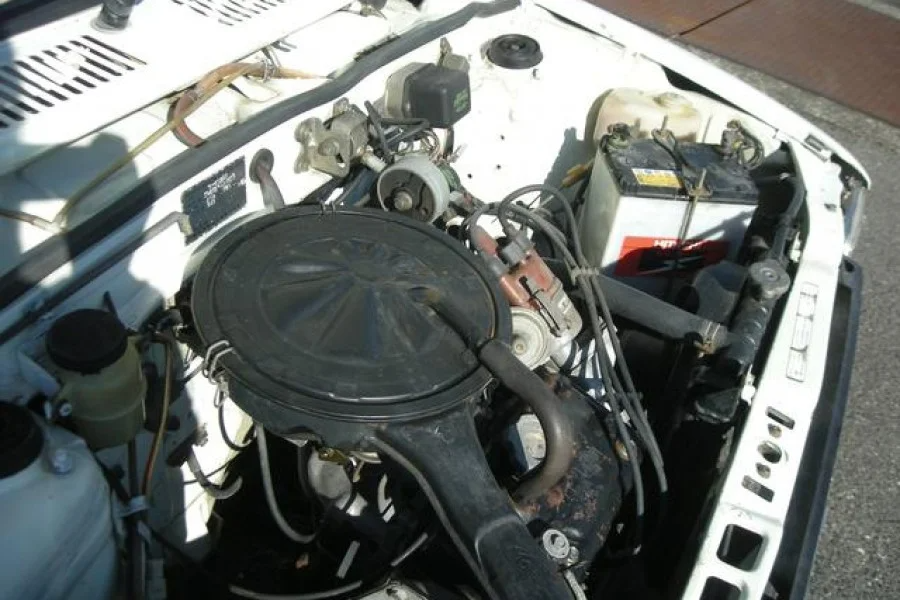The Ultimate Honda Acty Carburetor Guide
If you own a Honda Acty, you likely appreciate its compact size, versatility, and efficiency. But have you ever stopped to think about what makes this miniature powerhouse tick? Enter the unsung hero of your Acty’s engine: the carburetor. In this guide, we’ll delve into the critical aspects of the Honda Acty carburetor, demystifying its workings and shedding light on its importance in keeping your mini truck running smoothly.
Understanding The Honda Acty Carburetor: Engine’s Fuel Maestro
At the heart of your Honda Acty lies its carburetor, a device responsible for mixing air and fuel in the proper ratio for combustion within the engine. Though often overlooked, the Honda Acty carburetor plays a crucial role in determining the performance and efficiency of your vehicle.
Inside the Honda Acty carburetor, several components work together seamlessly to ensure optimal fuel delivery. These include the throttle valve, float chamber, jets, and idle mixture screw. Each part plays a distinct role in regulating the air-fuel mixture, allowing for smooth acceleration, idle stability, and efficient fuel consumption.
Tuning To Enhance Performance with Upgrades
For Honda Acty owners looking to squeeze every ounce of performance from their mini truck, aftermarket carburetor upgrades offer a tantalizing solution. Upgraded carburetors with larger jets, improved airflow, and adjustable tuning capabilities can unleash the full potential of your Acty’s engine, delivering increased power and responsiveness on the road.
Proper tuning of the carburetor is essential to ensure peak performance and fuel efficiency in your Honda Acty. Factors such as altitude, temperature, and engine condition can affect the air-fuel ratio, necessitating periodic adjustments to maintain optimal operation. Regular tuning not only maximizes performance but also prolongs the life of your engine.
Troubleshooting Common Issues Of The Honda Acty carburetor
Like any mechanical component, the Honda Acty carburetor is susceptible to wear and tear over time. Common issues such as poor idling, hesitation during acceleration, and excessive fuel consumption may indicate problems with the carburetor. Fortunately, many of these issues can be addressed through simple maintenance tasks such as cleaning, adjustment, or, if necessary, replacement of worn parts.Below is how you can troubleshoot some of the known Honda Acty carburetor issues.

Poor Idling:
Poor idling in your Honda Acty can be indicative of various issues within the carburetor. Start by checking for vacuum leaks around the carburetor gasket or hoses. Any air leaks can disrupt the air-fuel mixture, leading to unstable idling. Next, inspect the idle speed adjustment screw. If it’s misadjusted, it can cause the engine to idle too high or too low. Adjust the screw according to the manufacturer’s specifications to achieve the correct idle speed. Additionally, a dirty or clogged idle jet can restrict fuel flow at idle, resulting in poor idling. Remove and clean the idle jet thoroughly using carburetor cleaner and compressed air to ensure proper fuel delivery.
Hesitation During Acceleration:
If you experience hesitation or stumbling during acceleration, it may indicate a problem with the carburetor’s fuel delivery system. Begin by inspecting the accelerator pump diaphragm for any tears or damage. A faulty accelerator pump can result in insufficient fuel being delivered during acceleration, causing hesitation. Replace the diaphragm if necessary. Next, check the condition of the main jet and emulsion tube. A clogged jet or tube can restrict fuel flow, leading to poor acceleration. Clean or replace these components as needed to restore proper fuel delivery and eliminate hesitation.
Excessive Fuel Consumption:
Excessive fuel consumption can be attributed to several factors within the carburetor system. Start by examining the float level adjustment. An incorrect float level can cause the carburetor to deliver an excessive amount of fuel, leading to poor fuel economy. Adjust the float level to the manufacturer’s specifications. Additionally, check for any leaks or damage to the needle and seat assembly. A worn or damaged needle and seat can result in fuel overflow, leading to increased fuel consumption. Replace the needle and seat if necessary to prevent fuel leakage and improve fuel efficiency.
Engine Stalling:
Engine stalling can occur due to a variety of carburetor-related issues. Begin by inspecting the fuel filter for any clogs or restrictions. A dirty fuel filter can restrict fuel flow to the carburetor, causing the engine to stall. Replace the fuel filter if it’s dirty or clogged. Next, check the condition of the choke assembly. A malfunctioning choke can result in an overly rich or lean air-fuel mixture, leading to engine stalling. Clean or replace the choke assembly as needed to ensure proper operation. Finally, examine the condition of the idle mixture screw. An improperly adjusted idle mixture screw can cause the engine to run too lean or too rich at idle, resulting in stalling. Adjust the screw to achieve the correct air-fuel mixture for smooth idling and prevent engine stalling.
Rough Running:
If your Honda Acty is running rough, it may indicate a problem with the carburetor’s fuel delivery or air intake system. Start by inspecting the air filter for any dirt or debris buildup. A dirty air filter can restrict airflow to the carburetor, resulting in rough running. Replace the air filter if it’s dirty or clogged. Next, check for any vacuum leaks around the intake manifold or carburetor gasket. Vacuum leaks can disrupt the air-fuel mixture, causing rough running. Repair any leaks found to restore proper engine operation. Finally, clean the carburetor thoroughly to remove any dirt, varnish, or carbon buildup that may be affecting fuel delivery. Use carburetor cleaner and compressed air to clean the carburetor components, ensuring smooth and efficient operation.
Conclusion:
In the world of automotive engineering, it’s often the smallest components that have the biggest impact on performance. The Honda Acty carburetor may seem like a humble device, but its importance cannot be overstated. By understanding its inner workings, tuning it for optimal performance, and addressing any issues that arise, you can ensure that your Acty continues to serve you faithfully for years to come. So, the next time you turn the key and hear your mini truck purr to life, take a moment to appreciate the unsung hero under the hood – the mighty carburetor.


